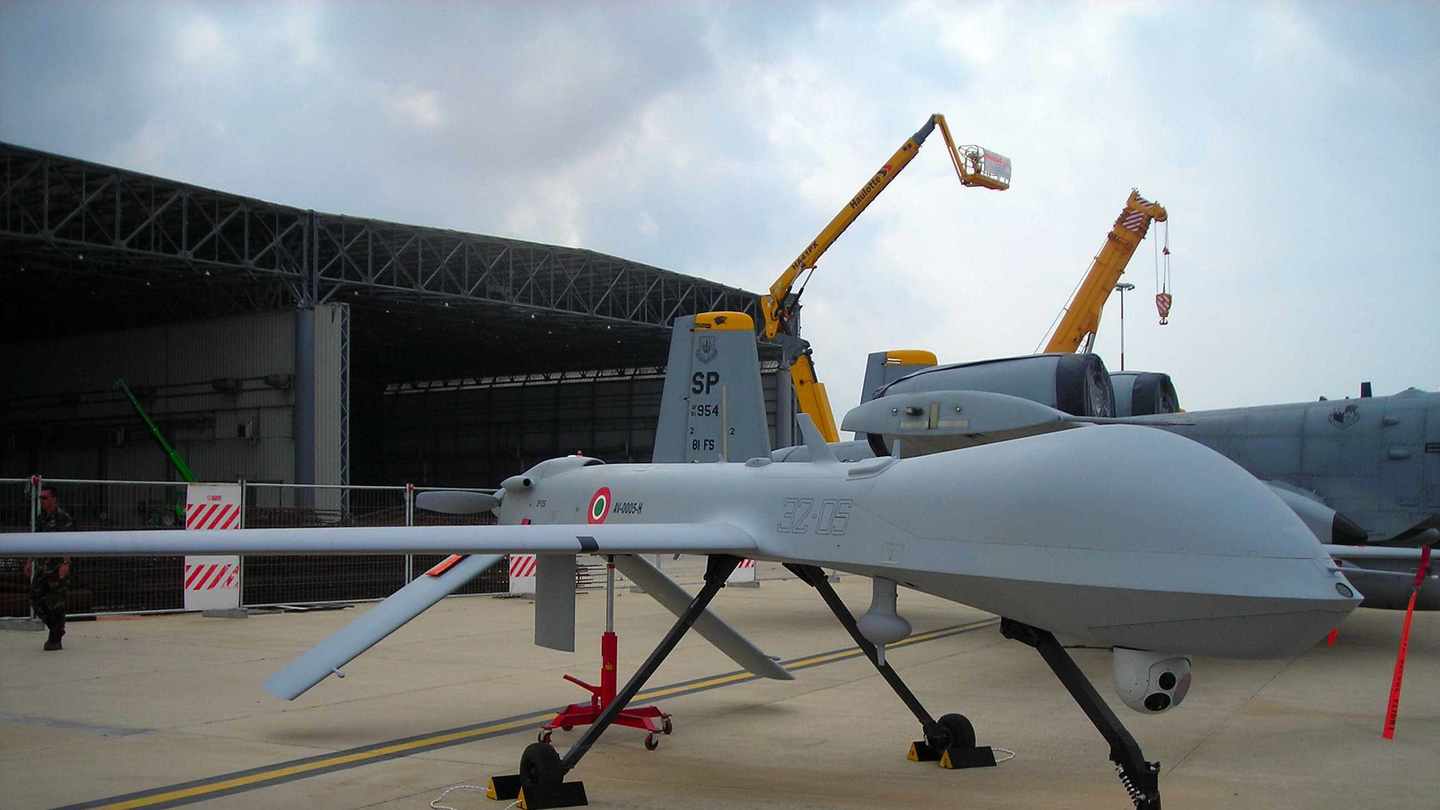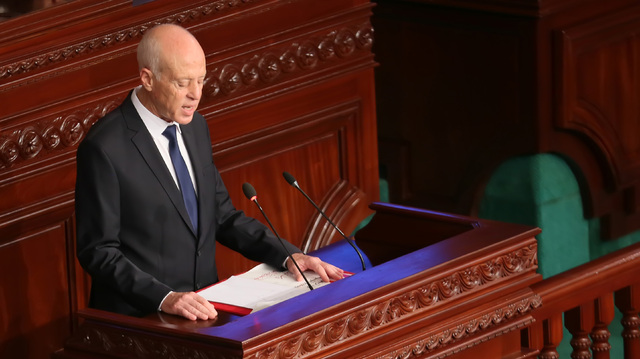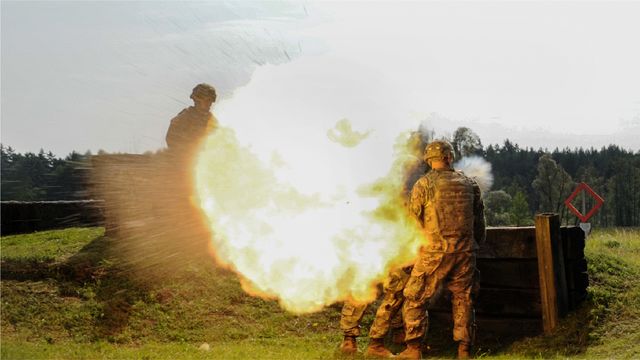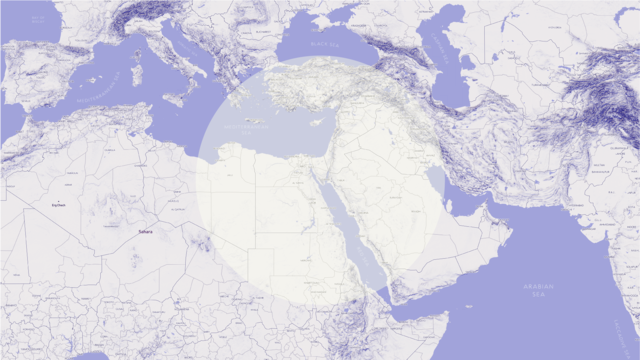Why Barack Obama ramped up drone strikes from George W. Bush

When former president Obama first took office in January of 2009 he inherited a new war on terror (WoT) started by his predecessor George W. Bush in response to the 9/11 attacks in 2001.The illegal invasion of Iraq had received strong world wide condemnation and the American public was dissatisfied with the continued presence of US troops on the ground in Iraq and Afghanistan. Obama’s promise to bring home the troops has been considered a major contributing factor to him winning the presidential race (The Washington Post, Jaffe:2015). A key part of his plan were the use of drones. These were used for surveillance and for the targeted killing of suspected Taliban and Al Qaeda fighters in Afghanistan. However, the programme has been shown not to be as surgical and effective as Obama had hoped and this article makes the case that the programme in fact morphed into western state terrorism.
Defining Terrorism
Any definition of terrorism is made within a specific context by an actor with an interest in how terrorism is understood. This is because the particular definition establishes the limitations and expectations on how political elites can act. Thus, subjectivity plays an important role in which actors and actions are labelled as terrorist. The interest is generally political in nature and represents a significant hurdle to a general international consensus on definition of terrorism (Hoffman 1998; 23).
Terrorism studies after the 9/11 attacks has seen a boom in research on policies, specialised university degrees and think tanks. Most of these has been dominated by the traditional thinking lead by scholars like Bruce Hoffman and Walter Laqueur. The followers of the traditional school of thinking consider fundamental that by definition states cannot commit acts of terrorism - a stance founded on a persuasion that a government has monopoly on violence within its own borders even in peacetime, and that a state has an inherent right to self-defence as enshrined in international law.
Though Lacquer and some others argue that illegitimate government’s acts can be terrorist in nature, yet they reject the idea that acts by western liberal states like the US, France or the UK could. On the other hand, within the growing area of Critical Terrorism Studies, the concept of western state terrorism is pursued and discussed by scholars from various academic perspectives.
There is no consensus definition among CTS scholars, however most agree that political and or economic gains, international and domestic power and control are the motivators behind state terrorism. The political and economic motivations could be classified as secondary, since they are generally utilised to retain or gain power. Ruth Blakeley’s understanding of state terrorism is that it is a tool used by states to gain or excerpt power, pressure, and to create financial gains. She also argues that terrorism is used by some states to achieve specific foreign policy objectives. A tool which, according to her, is generally used on the international stage by western liberal democratic governments in the global North to exert power over peoples, governments and markets in the global South (Blakeley 2009:1-5).
This article uses the same definition of terrorism as Noam Chomsky does in his research. Created and adapted by the US Army Code and Army Manuals in the 1980s. It defines terrorism as “…the use, or threat, of action which is violent, damaging or disrupting, and is intended to influence the government or intimidate the public and is for the purpose of advancing a political, religious, or ideological cause.” (Chomsky 2014:116). This definition has been selected because it is fairly wide and not actor based. Therefore, an incident can be analysed on the basis of the facts without being restrained by semantic limitations and political values. It recognises terrorism as a tool which can be wielded by various actors for a variety of reasons. Such wide definition allows for a more objective analysis of the facts.
The Cost/benefit analysis for Engagement in State Terrorism
The calculation process that political elites go through when deciding whether or not to engage in state terrorism does not generally take up significant part of the literature on state terrorism. It is rather the underlying political or otherwise founded goals or motives that seem to be of greater interest to many scholars. The process is an important link to understanding the nature of state terrorism, especially that inflicted by western democratic states. In order to be able to describe this phenomena, one must understand how the decision makers think around the use of violence. Duvall and Stohl 1983 (cited in Stohl 1988) have done work in this area and they have based their theory on the use of cost/benefit analysis of political elites on Weiner’s theory of expected utility (Stohl 2008:6-7). They suggest that there are three main aspects that are considered. The first is what benefits can be expected from using terrorism rather than another form of action. The second is the likelihood of the desired state of affairs being achieved if terrorism is used. The third is concerned with what the likely costs of engaging in state terrorism in this specific case are (Stohl 2008:6-7). Thus, this calculation process suggests that political elites think about the use of state violence, legitimate and illegitimate, from a cost/benefit perspective. Stohl, Blakeley and Chomsky along with many other scholars argue that the apparent lack of accountability for political elites who engage in terrorism lowers the threshold to engage, if there is little risk to the individual decision makers of being held accountable.
Obama’s Drone Programme
Using drones in an armed conflict is an attractive option for western states, compared to traditional modes of warfare with boots on the ground. Technological advancements now allow governments like the US to collect information on and carry out targeted killings of individuals using unmanned drones firing hellfire missiles and other projectiles and bombs. This type of warfare is far less risky for the US military personnel and it is also significantly less costly than traditional warfare, thus it is not surprising that the Obama administration has taken to it. This essay is concerned with the US drone strikes used in targeted killings; its lawfulness under international law; the cost to local populations; US interpretation of intentional law and its effectiveness.
The Obama administration has been sharply criticized for the negative impact of its drone activity on local populations and the number of civilian casualties. Linked to this is the problematic decision by the administration to classifying all able-bodied males as military combatants or lawful targets when killed in drone strikes (Devereaux, Hindu Kush: 201effi). Means through which they can report a lower number of civilian casualties. It also makes drones strikes appear more efficient and surgical than the pictures painted by NGO and UN reports.
It is estimated that a total of 3,341 people were killed by drone strikes in Pakistan between 17th July 2004 and 1st September 2015 (Out of Sight Out of Mind 2015). The number of officially unidentified victims is 2,565, males classified as military combatants according to the administration’s definition. This policy of 'guilty until proven innocent' is highly problematic as it suggests that the US government has little respect or care for the lives of civilians in their areas of operation. This specific definition of combatants may contribute to an arbitrary deprivation of life, according to an Amnesty International Report (Amnesty International 2018:3-5). As these victims have not been officially identified, it will never be known if they fulfilled the requisite of direct participation in hostilities as set forth in the IHL criteria.
The US uses what it calls the 'near certainty principle' to minimize the damage to local populations (Amnesty International 2018:13-16). The principal means that drone operators must be near certain that no civilians are likely to be injured or killed if the strike is carried out. If this threshold is met in all or the majority of US strikes, then how is it that only 1.6 percent of those killed between July 2004 and September 2015 were 'high-value' or intended targets (Out of Sight Out of Mind 2015). An inside source who provided the Intercept with highly-classified materials on US drone strike operations, suggests that flawed and unreliable information is the key explanation for the high number of civilian casualties and injuries. Mobile phone SIM-cards and other forms of metadata are commonly collected and used to track targets in Pakistan and Afghanistan. The data is merged with local intelligence, obtained from civilians and the military (Devereaux, Hindu Kush:2015). The inherent difficulty of using metadata from a laptop or a mobile phone to locate and then launch a lethal strike is that the target may not be at the location at the time of the strike or the metadata may not be theirs. The target may be using the same mobile phone for a period of time, however, that does not mean that he will always be where the phone is, nor that he does not give it away or loses it. The Intercept’s, source argues that metadata is not reliable enough for targeted killings by drones (Devereaux, Hindu Kush:2015) and the high number of civilian casualties can be seen as a strong indication of this.
Ambiguities in International Law
The key international laws that govern the use of force and set out what is considered acceptable and unacceptable behaviour during armed conflicts are founded on 'just war theory' which declares that “states can have moral justification for resorting to armed force” (Orend: 2000). Therefore laws were created to govern how force is used and who may be targeted in an armed conflict.
The key international laws covering the subject of who may be targeted are the Geneva Convention of 1949; International Humanitarian Law (IHL) and International Human Rights Law (IHRL). Out of which IHRL is applicable both in peace and war time. The Geneva Convention and IHL both cover the subject of who may lawfully be targeted in an armed conflict. Common Article 3 of the Geneva Convention declares that in an armed conflict, only combatants (here referring only to the members of a states armed forces), who are directly partaking in an armed conflict, may lawfully be targeted by enemy forces (Casey-Maslen 2012:607). The Geneva Convention does not provide a definition of the criteria of 'direct participation’ in hostilities, however, the International Committee of the Red Cross's 'Interpretative Guidance' presents two exceptions to the prohibition on the targeting of civilians (Pejic 2015:23). Civilians who are members of an organised armed group party to a non-international armed conflict and holds a “continuous combatant function” (Panel discussion ICRC (Pejic): 2015) within that group may be targeted under IHL (Pejic 2015:23). The second exception is that of occasional direct participation in hostilities by civilians, who may then only be targeted “for such time as they take a direct part in hostilities” (Panel discussion ICRC (Pejić): 2015). Civilians who take occasional part in hostilities in an unorganised manner can be arrested and charged for any crimes they may have committed during their participation in hostilities. Domestic law applies to the individual as soon as he or she is no longer directly participating in hostilities, as under IHL direct participation in hostilities is not a war crime, thus, in such instances they are civilians and are not subject to military law as combatants (Panel discussion ICRC (Pejić): 2015). However, if civilians can be proven to have been directly partaking in the conflict, the act carried out by a civilian must fulfil three criteria set up by the IHL for the civilian to be lawfully targeted. The ICRC has drawn up three criteria for ‘direct participation’:
“1. the act must be likely to adversely affect the military operations or military capacity of a party to an armed conflict or, alternatively, to inflict death, injury, or destruction on persons or objects protected against direct attack (threshold of harm), and 2. there must be a direct causal link between the act and the harm likely to result either from that act, or from a coordinated military operation of which that act constitutes an integral part (direct causation), and 3. the act must be specifically designed to directly cause the required threshold of harm in support of a party to the conflict and to the detriment of another (belligerent nexus)”(Melzer 2009:46).
The targets of US drone strikes do not wear uniforms, they dress just like the local population for cultural and religious reasons and to blend into the local population to avoid detection. According to a former drone operator, Brandon Bryant, it is impossible to see the face of people on the ground (Brandon Bryant, a former US-drone pilot, speaks at ECCHR in Berlin 2014). The US has the legal and moral responsibility to be certain of an individual’s direct participation in hostilities before that individual can lawfully be targeted, according to the above criteria. A responsibility which is made incredibly difficult by how the targets are able to blend into local populations, the lack of strong and reliable information combined with the limitations of the technology. Below is an example of the possible results;
In the Pakistani region of North Waziristan it is customary to invite passing travellers in for a meal. In the spring of 2009 a vehicle carrying several passengers passed through the village of Khaisor and as custom dictates the travellers were invited in for food by the villagers. The men in the vehicle were identified as Taliban by the US and a strike was launched. However, the strike was not launched until 04:30 the following morning, many hours after the men in the vehicle had left (Kantar 2009).
It must then be surmised that the operators either made a mistake, possibly based on poor intelligence, or that they intended to target the village after the suspected Taliban members had left. The latter meaning that the attack was launched to kill and frighten the villagers rather than to assassinate high value targets. Materials leaked to the Intercept show that US attacks such as this are not uncommon.
The US drone strikes in Afghanistan are since 2012 carried out as a part of its participation in the Afghan civil war, a non-international armed conflict, on the side of the government (US Department of State 2019). The US drone strikes carried out in Pakistan are part of that non-international conflict, however, these strikes can be classified as extraterritorial as they lay outside the geographical boundaries of the battlefield (Panel discussion ICRC (Pejić): 2015). That is if IHL is found to extend into states which are not party to a conflict but into which it has spilled over to. In the case of the US drone strikes in Pakistan the spillover is mainly due to the movement of Afghan Taliban fighters and leaders seeking shelter in the mountainous terrain in North Waziristan. There is significant debate on the issue of one state involved in a non-international conflict carrying out military operations or targeting individuals or groups on the sovereign territory of a state not party to that conflict. Dr O'Connell, a research Professor of International Dispute Resolution at the University of Notre Dame, puts forth that extraterritorial targeting of individuals in Pakistan by the US in this situation is unlawful. President Obama has attempted to justify US drone activities in Pakistan using the right to self defence under the UN Charter Article 51(O’Connell 2010:13) to use military force in self defence when the attack poses an “instant and overwhelming danger”(Cheng 2006:94). The core of both Obama and Bush administrations argument of self defence refers to the terrorist attacks of 9/11. However, the Pakistani government, Dr O'Connell argues, is not responsible for any attack on the US. Let alone any causing it to feel its in overwhelming danger which could have allowed the US to respond in self defence using military force (Dr. Mary Ellen O’Connell Speaks About Drone Attacks & International Law 2014). The Pakistani government cannot lawfully be held responsible for the actions of terrorist groups on its territory carrying out attacks outside that territory. The state of Pakistan itself would have to carry the responsibility for attacks in order for the US military attacks on Pakistani soil to be lawful under international law. Thus, Dr O'Connell concludes that the US has no lawful backing or justification for its use of drone strikes on the sovereign territory of the state of Pakistan (Dr. Mary Ellen O’Connell Speaks About Drone Attacks & International Law 2014).
The province of Waziristan on its north western border with Afghanistan has historically been classified as a safe haven for al Qaeda and the Afghan and Pakistani Taliban. The Geneva Convention has not been updated to handle the question of a non-international armed conflict spilling over into one or several other states. Rather it was created with the scenario of the government of a state fighting one or more armed groups within its territory, the possibility of the conflict to spilling over into neighbouring states was not accounted for (Pejic 2015:13-14). The legal ambiguities of this US activity and what laws ought to guide the US actions is thus unclear (Panel discussion ICRC (Pejic):2015). A prominent argument for the extension of IHL into a state which is not a party to the conflict is that the geographical distance between the target and the battlefield is irrelevant as long as the target is directly participating in the hostilities on the battlefield. It is argued that thanks to technology a target can be carrying out such actions so as to be deemed to be directly participating in the hostilities even if he or she is in a different country at the time. The physical distance is irrelevant as to his or her guilt. A strong counter argument to this straightforward approach is that it would create a global battlefield. Which has significant possible legal and practical consequences resulting in the target carrying IHL with it wherever it is in the world. IHL would then apply to a specific individual, making that person a legal target under IHL globally. Jelena Pejic, Senior Legal Adviser in the Legal Division of the International Committee of the Red Cross, points out that just because it may be considered legal under IHL, does not mean that states would apply IHL in this way due to policy concerns. Public opinion may not look favourably on the idea of a global battlefield where they themselves could potentially be targeted wherever they are (Panel discussion ICRC (Pejic):2015). Even if it could possibly be considered lawful to apply IHL to an individual in this manner it is plausible to assume that the UN would do its utmost best to discourage such an interpretation of IHL. The international legal debate on the issue of interpretation continues and states vary greatly in how they interpret the law.
When carrying out an attack, Article 57 (2) of the Additional Protocol of the Geneva Convention requires that those planning and carrying it out must “do everything feasible” (Protocol Additional to the Geneva Conventions of 12 August 1949, and relating to the Protection of Victims of International Armed Conflicts (Protocol I), 8 June 1977) to ensure that no civilians nor civilian objects are killed or damaged in the attack. Thus, before a drone strike is executed, it must be certain that the target has been correctly identified and that it is lawful and that there is no (or at least minimal) human collateral. However, during a US drone strike in North Waziristan in 2008 targeting Jalaluddin Haqqani, a leader of the Taliban, at least five missiles were dropped on a religious school founded by Mr Haqqani, killing between seventeen and twenty three people and wounding approximately twenty (Serle & Woods 2013). The victims of the attack were mainly women and children and three female family members of Mr Haqqani's including his wife. This example illustrates what several reports and academics are arguing is a trend in US drone strikes. In the above case it is clear that Article 51 (2) was not adhered to, as the strike knowingly targeted a school which is highly likely to be synonymous with targeting children which is unlawful as civilians may never be the intended targets of an attack. Civilian objects such as schools and other public buildings are sometimes used by parties to an armed conflict as a means of avoiding detection by the enemy. However, if there is a risk of disproportional cost to civilians, the attack should not be carried out as put forth in Article 57 (2) of the Geneva Convention (Protocol Additional to the Geneva Conventions of 12 August 1949, and relating to the Protection of Victims of International Armed Conflicts (Protocol I), 8 June 1977). There is also the matter of surveillance and the metadata collected prior to a strike, if the technology and the guidelines were as efficient as the administration suggests, why was this particular strike carried out?
Analysis
US drone strike activities are shrouded in darkness, but a former drone operator has revealed that the CIA draws up the plans and collects the intelligence. However, it is not civilian drone operators hired by the CIA that are carrying out the drone strikes as stated by the White House (The Guardian, Woods 2013). Instead it is the US Air force, according to the former operator Brandon Bryant, that carry out the actual drone activity from surveillance to targeted killings (Out of Sight Out of Mind 2015). Larry Lewis worked for the US government doing research on civilian casualties and he found that drone strikes are ten times more likely to kill civilians than conventional aircraft. He bases his findings on data from Afghanistan (Devereaux, Hindu Kush: 2015). He also expressed concern that the lack of oversight over the drone activity allows the CIA to manipulate data in their favour (Devereaux, Hindu Kush: 2015).
Drone strikes can be strategically useful as drones can easily access mountainous and remote areas. Utilizing a drone strike for a targeted killing automatically means bypassing the judicial system, the targets are not aware that they are targets, nor have they been informed of what crimes they are suspected of having committed and thus they have no chance to defend themselves. There is also the issue of direct participation, as it could be argued that under IHL each drone strike has to be individually justified and proven to be lawful.
It can be argued that the effectiveness of a military strategy in some situations and under special circumstances may justify a higher number of civilian casualties. Regardless of the validity of such an argument, the US drone strikes in Pakistan between the 17th July 2004 and 1st September 2015 killed 52 high profile targets in total compared to the number of civilians; children and unidentified casualties totalling at 3, 289 (Out of Sight Out of Mind 2015. The number of civilian and unidentified casualties compared to the intended high profile targets appears disproportionate to NGOs like Human Rights Watch and Amnesty International. Still the Taliban and al Al Qaeda appear to be prevalent enough for the US to deem them as posing an imminent threat to the state. A report by Amnesty International reflected views and numbers of other reports on the subject of US drone activity in Pakistan deeming it highly questionable and most likely illegal (Amnesty International 2018).
Many are calling the US tactics in Pakistan and elsewhere in the world ineffective and a failure, including inside sources mainly due to its ineffectiveness in killing high value targets and its significantly high civilian casualties (Devereaux, Hindu Kush: 2015). There are very rarely definite numbers of casualties of drone strikes as they often take place in remote areas and independent sources are few. The US government has consistently produced very low civilian casualty numbers inconsistent with reports by the UN and human rights organisations. The secrecy surrounding the drone programme means a lack of accountability of the US government and those planning and carrying out the drone strikes. Transparency is necessary to ensure that governments do not break international law; commit human rights violations and for the people of world’s democracies to trust its political leaders. There currently is no accountability for those responsible for the deaths of thousands of people. It is also a commonly held notion that the negative impact of drone strikes and drone surveillance and the killing of civilians is actually creating new terrorists. The despair and desperation is driving especially the young men to join local organised armed groups or the Taliban or al Qaeda, making the strikes counterproductive.










